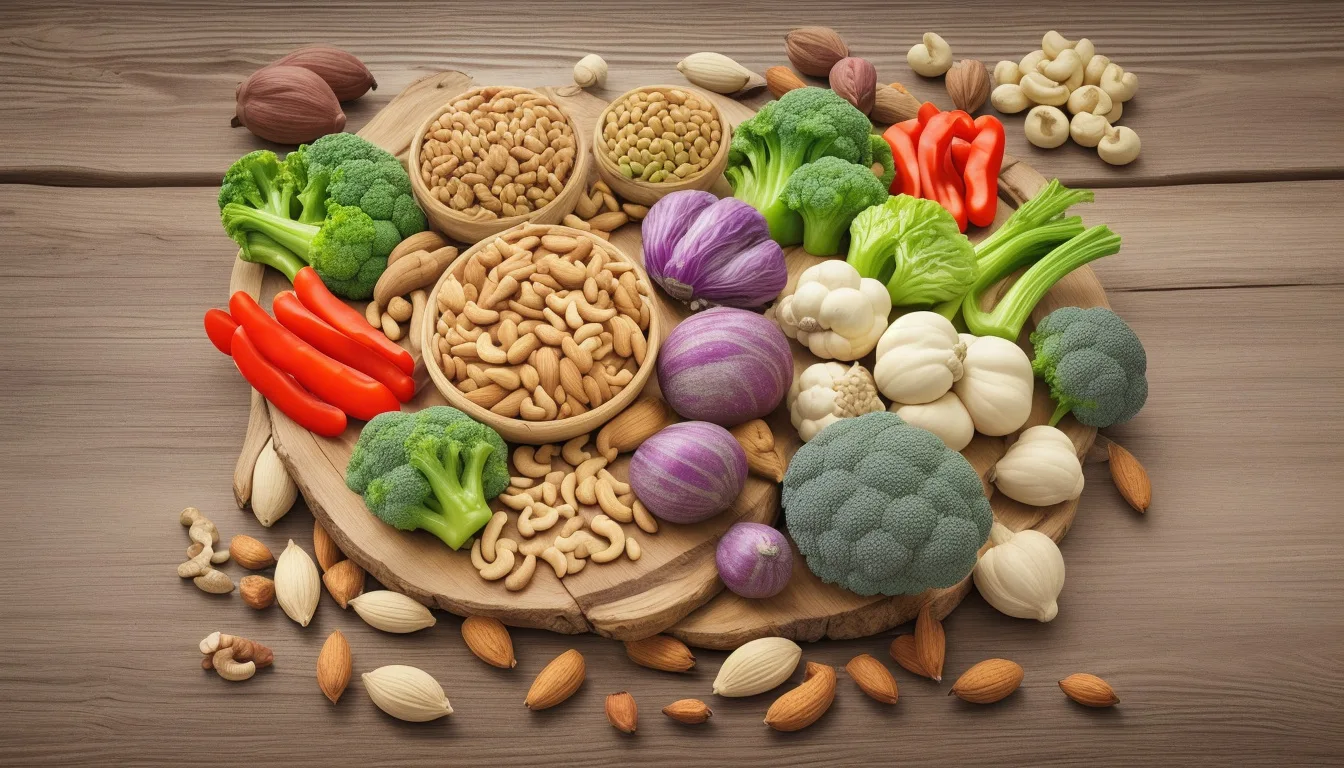
Getting started on the keto diet can feel like hiking into uncharted territory. There are new rules, new foods, and of course, this elusive condition of “ketosis” to chase. If you’re anything like me, the idea of ketones and ketosis can sound more like science fiction than a practical part of your diet.
Admittedly, it sounds daunting, all this new science-y stuff to learn. But honestly, it is a necessary skill to know, if you want to succeed on this diet. I’m writing this guide to help you through the process of checking ketones. I want to assure you that understanding how the keto diet works is half the battle.
Understanding Ketones and Ketosis
First things first, let’s get the basics down. The keto diet, short for ketogenic diet, is a low-carb, high-fat eating plan designed to help your body enter a state called ketosis.
In ketosis, your body burns fat for fuel instead of carbohydrates. This process produces molecules called ketones, which can be measured to see if you’re actually in ketosis.
If you are in ketosis, you are burning fat and your diet is working! Simple as that.

Imagine ketones as tiny messengers running around your body saying, “Hey, we’re burning fat here!”
There are three types of ketones you will hear about on this diet: acetone, acetoacetate, and beta-hydroxybutyrate (BHB). These can be measured in your breath, urine, and blood, respectively.
Why Check Ketones?
By now, you might be wondering, “Why should I bother checking my ketones?” Great question!
Checking ketones can help you:
1. Confirm Ketosis: Ensures that your body is in ketosis, which means you’re effectively burning fat.
2. Optimize Diet: Adjust your diet based on observed ketone levels to stay in ketosis.
3. Track Progress: Monitor how different foods and activities affect your ketone levels.
4. Stay Motivated: Seeing tangible results is incredibly motivating!
Here’s How to Check Ketones
There are three primary methods to check ketones: urine tests, blood tests, and breath tests.
1. Urine Tests
How it Works: Urine tests measure acetoacetate, one of the ketone bodies. You use a ketone test strip, dip it in your urine, and compare the color change to a chart.
| Pros: | Cons: |
| – Affordable: Urine test strips are relatively inexpensive. – Easy to Use: No needles or special equipment required. | – Less Accurate: Urine tests can be less accurate as your body adapts to ketosis. – Hydration Levels: Results can be affected by how hydrated you are. |
My Experience: When I first started the keto diet, I felt like a mad scientist in my bathroom, dipping strips into little cups and waiting for the colors to change. It was exciting at first, but over time, I realized the results fluctuated quite a bit. I took it to be a helpful starting point.
2. Blood Tests
How it Works: Blood tests measure beta-hydroxybutyrate (BHB) levels using a small blood sample, similar to how diabetics test their blood sugar.
| Pros: | Cons: |
| – Highly Accurate: Blood tests are considered the gold standard for measuring ketosis. – Immediate Results: Get instant feedback on your ketone levels. | – More Expensive: The cost of test strips and meters can add up. – Invasive: Requires a finger prick, which might not be everyone’s cup of tea. |
My Experience: I felt rather like a brave child pricking my finger and watching the meter. The accuracy was reassuring, but I won’t lie – it did sting a bit. Seeing the exact numbers was worth the little bit of discomfort, I supposed, at least in the beginning. I began to wonder, there’s got to be a better—less painful—way, right? Spoiler alert: there is!
3. Breath Tests
How it Works: Breath tests measure acetone, another type of ketone, using a breath analyzer.
| Pros: | Cons: |
| – Non-Invasive: No needles or blood required. – Reusable: Once you have the device, there’s no need for ongoing purchases. | – Costly Upfront: Breath analyzers can be expensive to buy. – Less Research: Not as much data on accuracy compared to blood tests. |
My Experience: Blowing into the breath analyzer felt like I was preparing for a sobriety test, but it was painless and straightforward. The initial cost made me wince, but not having to buy strips or lancets over time was a nice trade-off.

When to Check Ketones
Now that you know how to check your ketones, let’s talk about timing. When is the best time to test?
– Morning – Ketone levels are typically lower in the morning after an overnight fast.
– After Meals – Test a few hours after eating to see how your food choices affect ketosis.
– Before/After Exercise – Exercise can influence ketone levels, so testing around your workouts can be insightful.
Personally, I found testing in the morning and before bed gave me a good sense of my daily ketone fluctuations. It became part of my routine, like brushing my teeth or scrolling through social media.
Interpreting Your Results
Okay, you got your results. So… what do they mean?
Here’s a general guide:
– 0.5 – 1.5 mmol/L: Light Ketosis – Good for weight loss.
– 1.5 – 3.0 mmol/L: Moderate Ketosis – Optimal for fat burning and energy.
– 3.0+ mmol/L: Deep Ketosis – Can be useful for therapeutic purposes but may not be necessary for everyone.
If your levels are low, don’t fret! It might mean tweaking your carb intake or meal timing. High levels could indicate you’re doing everything right, or it might mean you need to eat more fats. It’s all about balance and listening to your body.

Tips for Staying in Ketosis
Here are some ideas I’ve picked up along the way that help me maintain ketosis:
When I get lazy about any of these steps, that’s generally when I stop losing weight.
1. Watch Carbs Closely: Keep your net carbs low (total carbs minus fiber), usually under 20-50 grams per day.
2. Eat Healthy Fats: Avocados, nuts, seeds, and olive oil are your friend
3. Moderate Protein: Too much protein can kick you out of ketosis. Aim for moderate amounts.
4. Stay Hydrated: Drink plenty of water to help your body function optimally.
5. Exercise: Physical activity can boost ketone production.

Common Pitfalls and How to Avoid Them
Even with the best intentions, it’s easy to make mistakes on the keto diet. Here are a few common pitfalls and how to avoid them:
1. Hidden Carbs: Sneaky carbs can hide in sauces, dressings, and processed foods. Always check labels.
2. Not Enough Fat: It can be hard to shift to a high-fat diet. Focus on incorporating healthy fats into every meal.
3. Too Much Protein: It’s tempting to load up on protein, but remember, keto is high-fat, moderate-protein.Too much protein can kick you out of ketosis!
4. Not Testing Enough: Regular testing can help you stay on track and make necessary adjustments.
5. Giving Up Too Soon: Adaptation takes time. Stick with it, and your body will adjust.
Staying Motivated
The keto journey is not always easy, but staying motivated will help. Here are some strategies that helped me:
– Track Progress: Keep a journal of your ketone levels, weight, and how you feel.
– Join Communities: Online forums and social media groups can provide support and inspiration.
– Celebrate Wins: Reward yourself for milestones, whether it’s a new recipe, a new workout gear, or a day off.
– Educate Yourself: The more you know about keto, the better equipped you’ll be to stick with it.
Some Final Thoughts
Checking ketones on the keto diet can seem confusing at first, but with the right tools and knowledge, trust me, it becomes second nature. Whether you prefer urine strips, blood tests, or breath analyzers, the key is consistency and understanding your body’s signals. Remember, the goal is to make this diet work for you, not to become a slave to the numbers.
Embarking on the keto journey has been a wild ride for me, filled with ups, downs, and a lot of bacon. But every step, every test, and every adjustment has brought me closer to understanding my body and how to fuel it best. It’s an interesting journey.
Take your first step, keep setting one foot in front of the other, and remember—You got this!





3 thoughts on “How to Check Ketones on the Keto Diet”